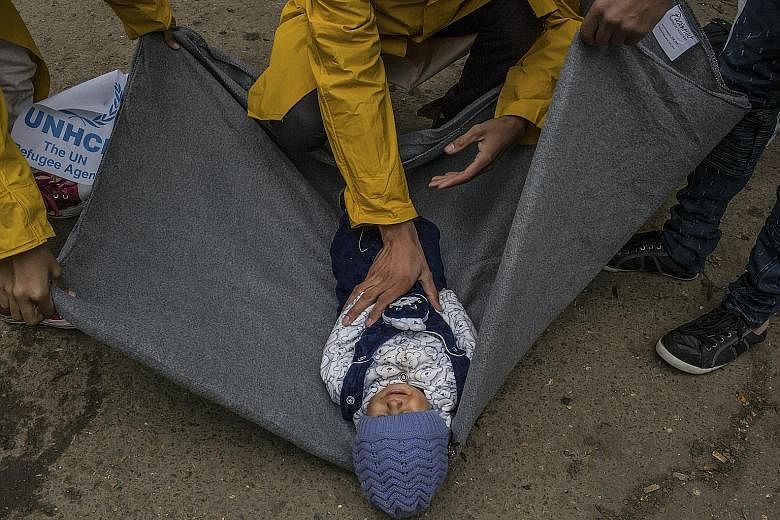OPATOVAC (Croatia) • The migrants coming into Europe through the Western Balkans in recent months have been resourceful and adaptable enough to slip around unfriendly police, raging rivers, hostile borders and razor-wire fences.
However, there is one thing they cannot evade, and that is the looming winter. Perhaps as soon as later this month and certainly by the end of November, the season will shift in the Balkans.
Finger-numbing rain, an autumn fixture, will descend into snow and freezing winds, complicating the arduous journeys starting from Syria and other war-torn nations into the heart of Western Europe.
An unofficial humanitarian corridor, which has been operating for more than a month with the unacknowledged cooperation of the nations involved, has kept migrants moving through the region, and the summer's squalid backups at borders have nearly vanished.
But the situation was thrown into flux again last Friday, when Hungary said it intended to close its border with Croatia.
As long as the migrants keep moving, the countries along the route can deal with the flow, refugee officials and aid workers said. And as long as there is a steady flow, the opportunity for tragedy from the impending cold is lessened.
But with autumn winds carrying the first hints of frost, and the situation along the borders unresolved, the migrants, aid workers and government officials are anxiously looking ahead. If the numbers surge or, worse, if the border closings expand, there would be an almost immediate backup that would quickly repopulate border camps within a week - some of them open-air, others mostly unheated tents.
The looming threats have kept migrants on the move, hurrying from border to border to try and reach their destinations - most often Germany and Sweden.
In previous years, the flow of migrants into Europe slowed to a trickle as winter approached, largely because the Mediterranean becomes especially treacherous in the cold months. But with more migrants avoiding the once-popular sea route from Libya to southern Italy in exchange for a shorter, but still potentially dangerous, sea crossing from Turkey to the nearest Greek islands, the numbers flowing into Europe continue in the thousands, with a record 5,800 registered in just one day this month on Serbia's border with Macedonia.
Governments in the region are struggling to find disused buildings, like military barracks or schools, that can be quickly turned into heated housing for migrants, should the path forward become blocked. And aid workers are also trying to assemble a stockpile of blankets, heavy coats and winterised tents, just in case the worst happens.
Migration officials warn it may be a matter of days until the system collapses under the strain, as the migrants keep crossing from Turkey into Greece and through the Balkans, many saying they want to get ahead of the winter and the possibility of further border closings.
Slovenia has estimated it can manage things if Croatia admits up to 2,500 migrants a day. But Croatia has asked Slovenia to take in at least 5,000 migrants a day.
Austria, Slovenia's northern neighbour, insists it cannot handle more than 1,500 people entering the country daily.
"We are facing huge demands from Croatia and severe limitations from Austria," said Mr Bostjan Sefic, a senior official at the Slovenian Interior Ministry. The only way the human flow will run smoothly through Slovenia is if the authorities can "balance the number of migrants entering the country with the number of those leaving it".
In Austria, where thousands are requesting asylum while the majority press on towards Germany, officials at the largest reception camp outside Vienna hope to have all of the tents down by the end of the month and move migrants into heated buildings.
"We were freezing," said Fadi, 42, who arrived at the camp on Oct 5, and who declined to give his last name to protect his family in Syria. "We didn't sleep. We did exercises all night long to keep warm."
So far, the coldest weather in central Croatia has been 6 deg C on the night of Oct 12, but the long-range forecast calls for temperatures to fall below freezing this week.
With the open borders, the system seemed to be working.
"You should have seen it here a few weeks ago," said Ms Ivana Marisavyevic, the Red Cross coordinator at the camp beside the main train station in Belgrade, Serbia. "There were many, many times more people here than there are now. Now, most just stay for a few hours before catching the next bus."
NEW YORK TIMES

